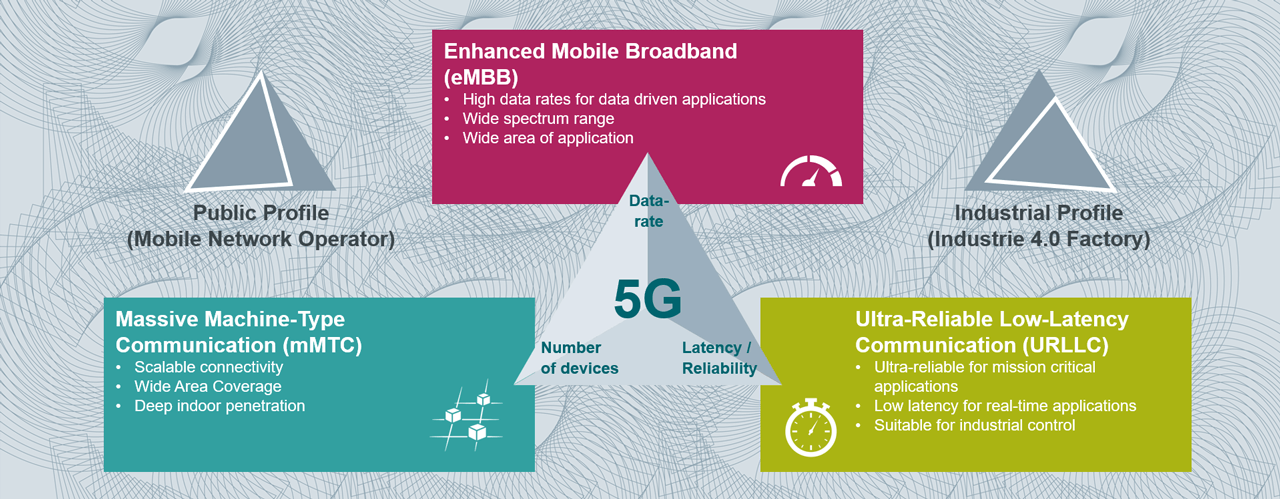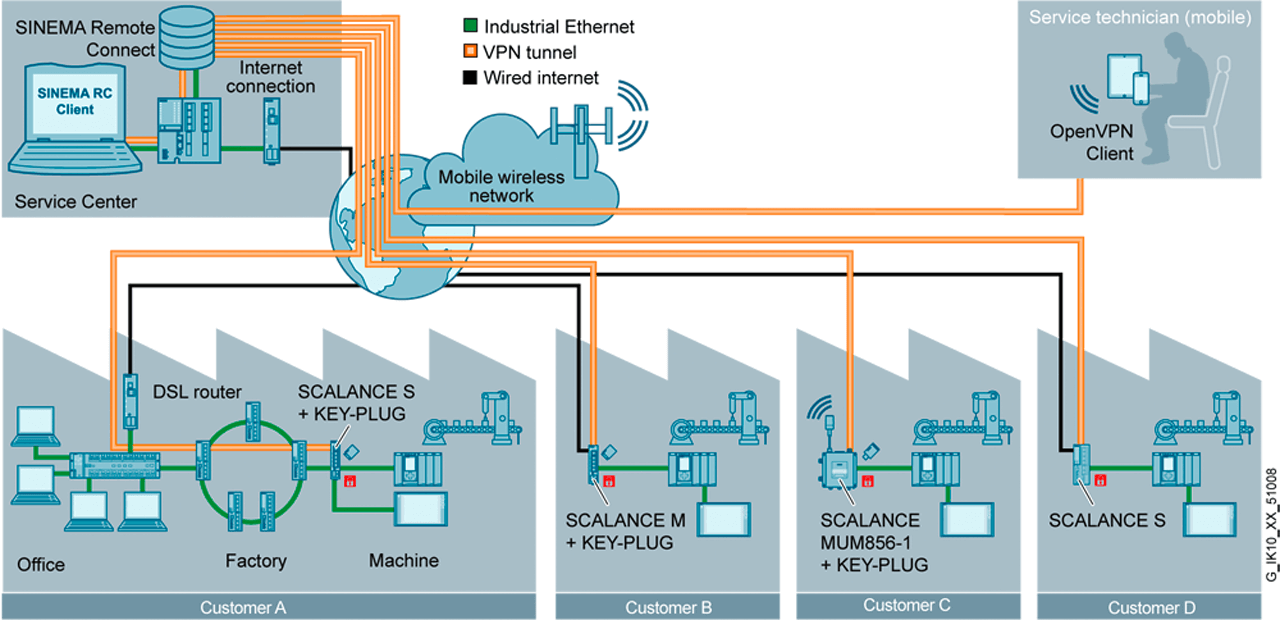TechnologyFebruary 2, 2021
Secure remote access via public 5G networks

It is only a matter of time until 5G will establish itself in industry. The flexibility of 5G with its different implementation approaches, private and/or public, makes this standard the most versatile mobile communications solution for industry, and solutions previously not feasible are now within reach.
Since the 1970s, mobile wireless networks have enjoyed enormous gains in performance with each new generation that has been introduced. The 5th generation of the mobile communications standard (5G) is currently being rolled out. The main benefits of 5G are higher bandwidth, greater reliability, lower latency, and lower power consumption.
Industrial 5G
This new technology seems predestined for use in industrial applications. Their requirements for wireless networks are different from the ones for public, commercial mobile phone networks. Industrial private 5G networks are the key to success here. But for applications requiring remote access to distant machinery or equipment, a public 5G network is indeed the right answer.
With 5G, a new mobile communications standard was developed for the first time which took into consideration industrial use cases – and it is already being deployed. 5G brings three main scenarios: enhanced Mobile Broadband (eMBB), Ultra-Reliable Low-Latency Communications (URLLC), and massive Machine-Type Communications (mMTC). These scenarios serve different application areas: eMBB is bandwidth-oriented and URLLC supports the requirements of industrial IoT applications such as low latency with best possible reliability. MMTC is used for applications which require low power consumption and contain a large number of connected devices. However, the full implementation of these three main scenarios is not possible simultaneously within the same network. A network can only be designed and configured in such a way to fully support one scenario. For example, it can offer either the highest possible data rate or the lowest possible latency. Both at the same time are not possible.
This is where the necessity of different implementation approaches for 5G networks comes into play. A public 5G network is typically set up to provide high bandwidths for video telephony, video streaming, and other data-intensive applications. High bandwidth is a key argument advertised by mobile providers who are already introducing 5G in a number of countries around the world.
However, for the majority of applications in a factory, bandwidth plays a minor role. The emphasis here is mainly on reliability and ultra-short latencies when it comes to communications. Therefore, private networks are an integral part of the 5G standard.
They enable companies to establish their own local 5G networks and adapt them to their mission-critical applications. For this purpose, the German Federal Network Agency (Bundesnetzagentur) has reserved part of the frequency spectrum for use in private, local 5G networks. This spectrum can be obtained for the setup of local campus networks for a reasonable fee.
Wireless connectivity
In addition to requiring local wireless connectivity, the industry is also increasingly demanding remote access to distant machinery and equipment, e.g., for remote maintenance. In those applications, communication usually takes place over great distances.
Public mobile networks enable access to distant participants, even in other countries. Moreover, service technicians can connect to the machinery to be serviced via mobile communications while en route.

The three main 5G scenarios
Public 5G networks
Public 5G networks are an important pillar for remote access and remote maintenance solutions. The advantage of 5G lies in the flexibility of the technology, which is an integral part of the standard. For example, very high bandwidths can be made available to users in urban areas through small radio cells and high frequencies.
In rural areas, radio cells have to cover a larger area which is why lower frequencies are used and the available bandwidth is divided among more users. Particularly at the edges of radio cells, massive losses in bandwidth and stability of the communication connection can be expected using, e.g., LTE or UMTS. However, it is precisely in these remote locations where a stable broadband transmission is required for remote maintenance or video streams, e.g., of water stations.
With the innovative wireless technologies of 5G, significantly more bandwidth with higher reliability is made available at the edges of the radio cells, and the average data rate for users within a radio cell also increases.
By increasing coverage and bandwidth, 5G networks make it possible to run data-intensive applications even at the edges of radio cells, which would have been difficult to do with previous mobile wireless networks – for example, the reliable and stable transmission of large amounts of data for firmware updates. This saves on-site service calls. To make the connection of the remote stations easier, so-called rendezvous servers are used.

Remote maintenance of standard production machines at different end customers with SINEMA Remote Connect
SINEMA Remote Connect
Our management platform for VPN connections, SINEMA Remote Connect, is such a solution. It enables convenient and secure access to remote machinery or equipment – even if they are integrated into other networks. The server application enables an easy management of VPN tunnel connections between control center, service technicians, and remotely installed machinery or equipment.
The rendezvous server solution offers the user a high degree of flexibility and security. The user can choose whether the system is to be hosted locally or on the Internet and which machines or which section of the plant are accessible to service technicians.
In addition, a central user management with optional Active Directory connection, a suite of directory-based identity-related services, facilitates the management of rights. In combination with the high bandwidths, the stability of 5G networks, and the simplicity of rendezvous server solutions, a reliable and stable remote access via mobile communications can be realized even in distant areas.
No matter where the journey goes – it is only a matter of time until 5G will establish itself in industry. The flexibility of 5G with its different implementation approaches – private and/or public – makes this standard the most versatile mobile communications solution for the industry. Solutions previously not feasible are now within reach, and applications no one dared to think about may be realized in the near future.


